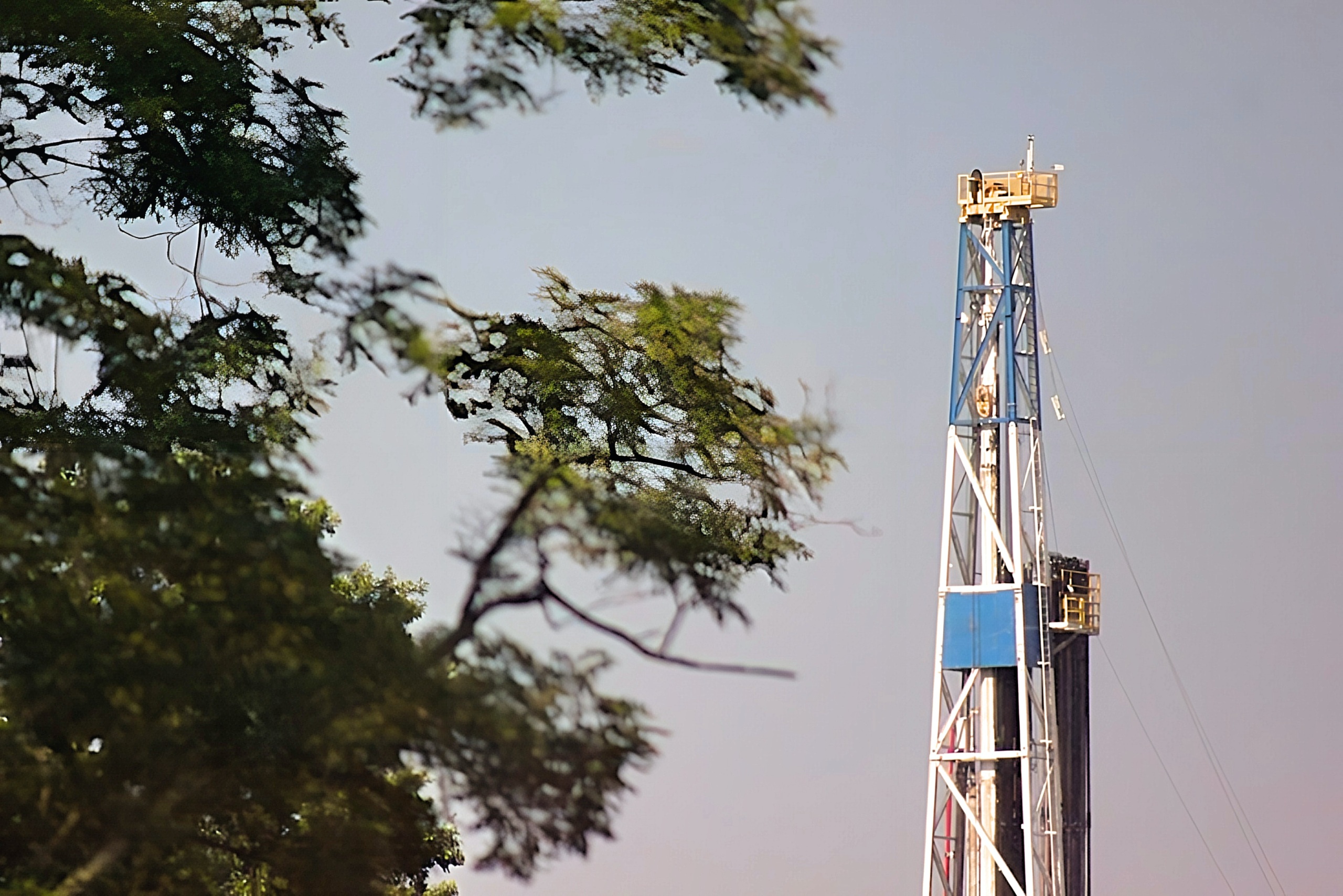
Methane Gas Leaks
Frequent leaks are resulting in death, injury and other damage to our health and environment
Methane gas (often known as natural gas) has heated the homes of many Americans for over a century – and for over a century, it has been prone to leaks, putting communities and the environment in danger. With growing awareness of the impact of methane leaks on the climate, and with growing availability of safer alternatives, it is clear that gas has no place in a modern clean energy network.
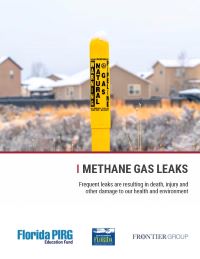
Methane gas (often known as natural gas) has heated the homes of many Americans for over a century – and for over a century, it has been prone to leaks, putting communities and the environment in danger. With growing awareness of the impact of methane leaks on the climate, and with growing availability of safer alternatives, it is clear that gas has no place in a modern clean energy network.
Gas leaks and pipeline incidents are common and put public health and safety at risk.
-
In 2010, a gas terminal failure in San Bruno, California, caused an explosion on the scale of a magnitude 1.1 earthquake. Eight people were killed and 58 were injured. The event led to the creation of mandatory gas safety programs around the country.
-
In 2018, high-pressure gas was accidentally released into low-pressure gas distribution lines in Merrimack Valley of Massachusetts, starting more than 80 fires in three towns. An 18-year-old was killed, and thousands of people went without gas for months.
-
In March 2022, a four-story apartment building in Silver Spring, Maryland, was destroyed in an explosion caused by a leak coming from a cut gas line. In total, 14 people were hospitalized and over 200 were displaced.
A gas pipeline incident occurs somewhere in the U.S. approximately every 40 hours. From 2010 through nearly the end of 2021, almost 2,600 pipeline incidents related to the release of gas occurred in the United States that were serious enough to be reported to the federal government, 328 of which resulted in explosions. Those explosions and fires killed 122 people and injured 603.
The amount of gas leaking to the environment is far greater than captured in federal leak reporting or emissions estimates from the Environmental Protection Agency (EPA). A 2020 study, for example, estimated that there are more than a half million leaks in local gas distribution systems in the U.S., and that leakage from these systems was five times greater than the amount estimated by the EPA.
Table ES-1 Number of reported gas pipeline leaks by year
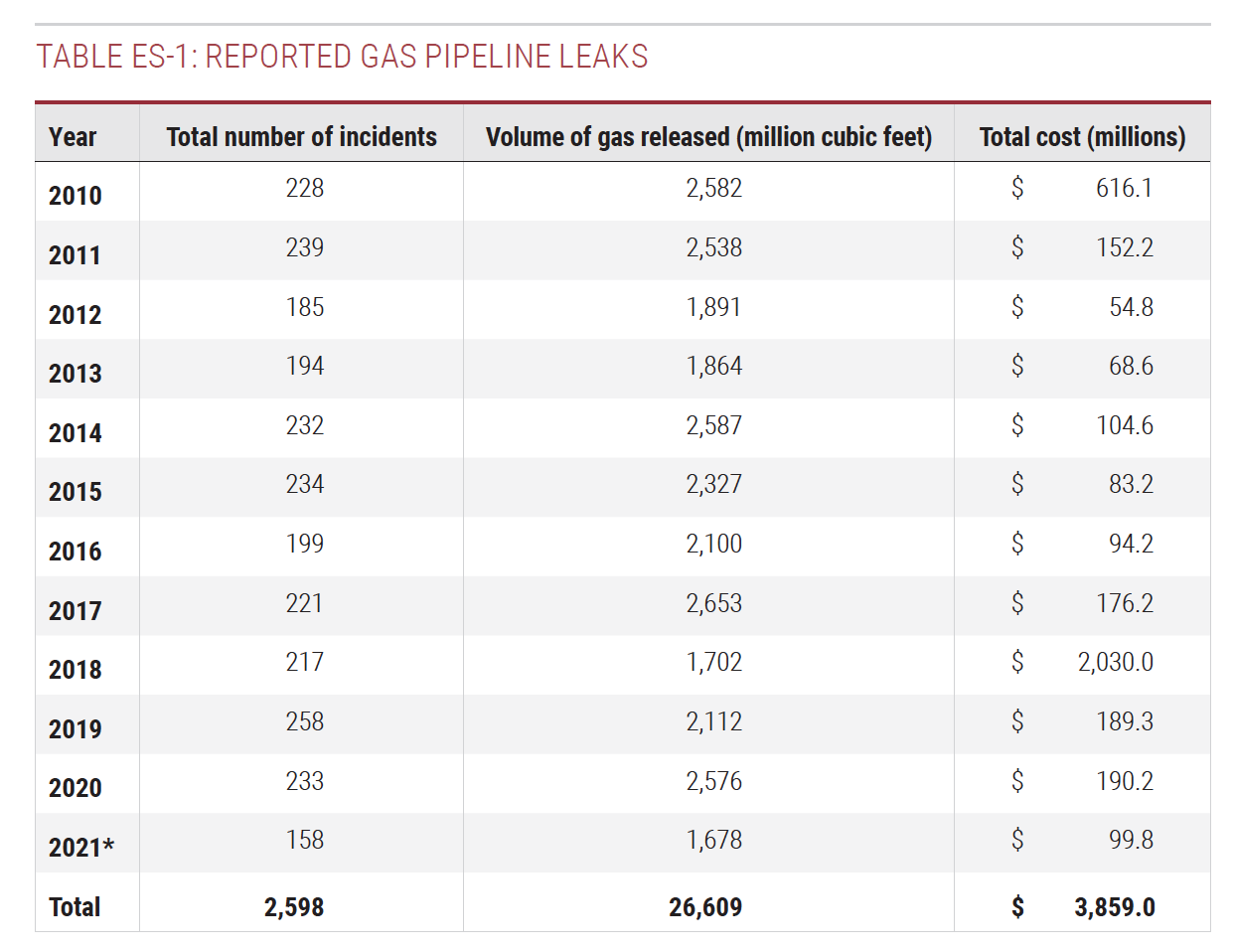
*Values for 2021 include incidents through October 6, 2021.
Gas can be released intentionally by a utility to lower pressure or empty pipelines for maintenance, or can be released unintentionally due to wear, equipment failure, natural causes, or accidental force or puncture.
Gas leaks contribute to global warming. Gas leaks reported to the federal government resulted in the release of 26.6 billion cubic feet of methane gas from 2010 through October 2021, equivalent in its effects on global warming to emissions from over 2.4 million passenger vehicles driven for a year.
The EPA estimates that emissions from natural gas transmission and distribution systems and storage fell significantly between 1990 and 2016, but progress has slowed since. However, EPA reporting of greenhouse gas emissions from gas systems is likely incomplete. While EPA estimates that the rate of leaks throughout the gas supply chain is 2-3%, studies suggest leak rates throughout the supply chain are significantly higher – high enough that they offset any greenhouse gas benefit of gas over coal.
The frequency of major gas leak incidents has not declined significantly since 2010, despite the time and money that gas utilities have spent to address leaks in the wake of several deadly explosions. (See figure below.)
Figure ES-1: Reported gas pipeline leak incidents, 2010 to 2020
-
In states such as Illinois and Maryland, utility programs have prioritized complete system replacements over focused replacement of leak-prone infrastructure, resulting in the expenditure of billions of dollars for limited public safety benefit.
-
While efforts to reduce leaks from gas distribution systems have made some progress, reliance on methane gas is inconsistent with the need to decarbonize the nation’s energy system by mid-century. As a result, investments in gas systems beyond those needed to protect public health and safety could become “stranded,” diverting attention and resources that should be used to transition the nation’s energy system to truly clean forms of energy.
The consistent risks posed by gas leaks – coupled with the urgent need to address climate change – mean that the nation should prioritize electrifying buildings while taking immediate, focused actions to address the biggest safety risks.
Topics
Find Out More

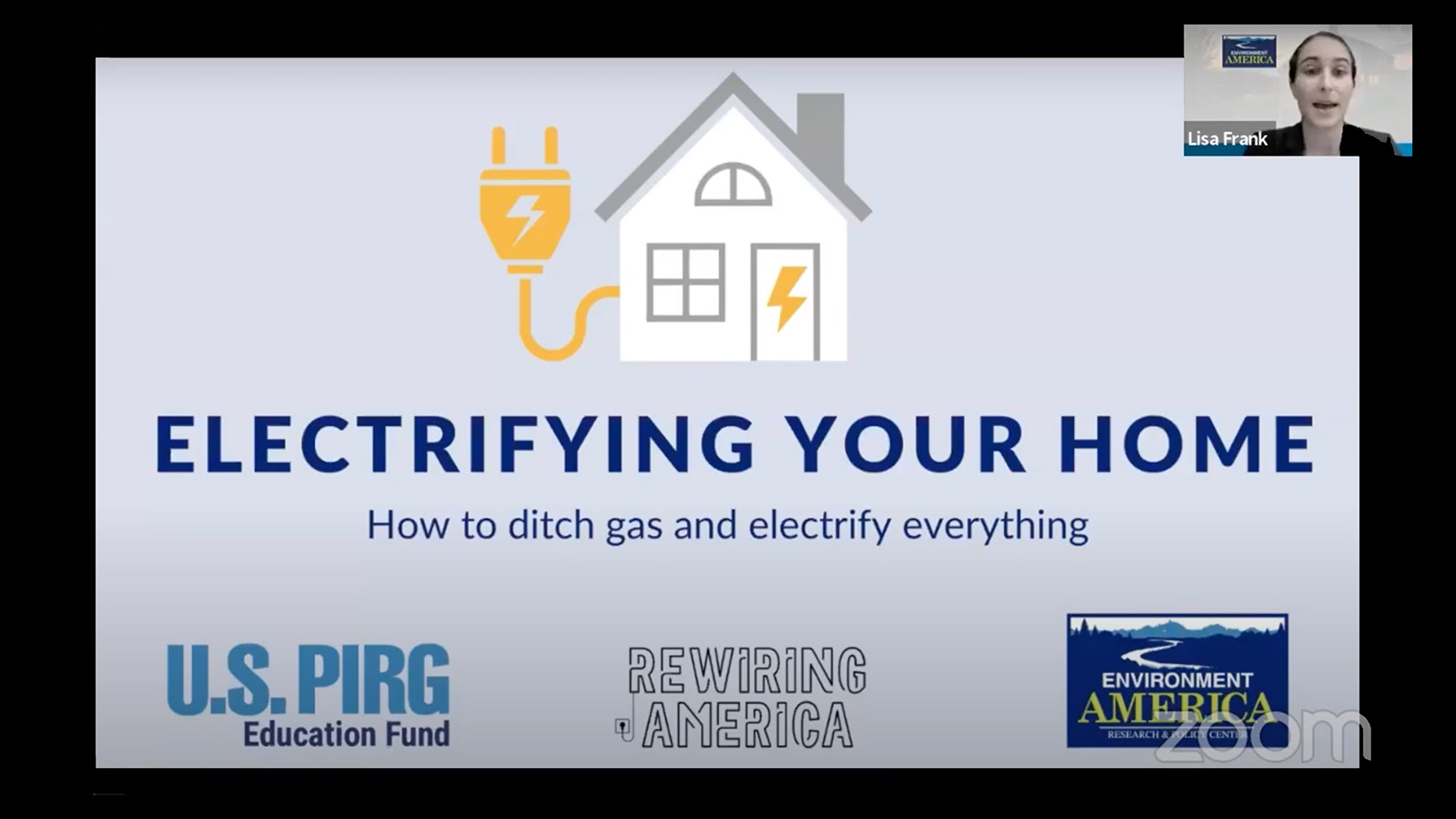
How you can electrify your home
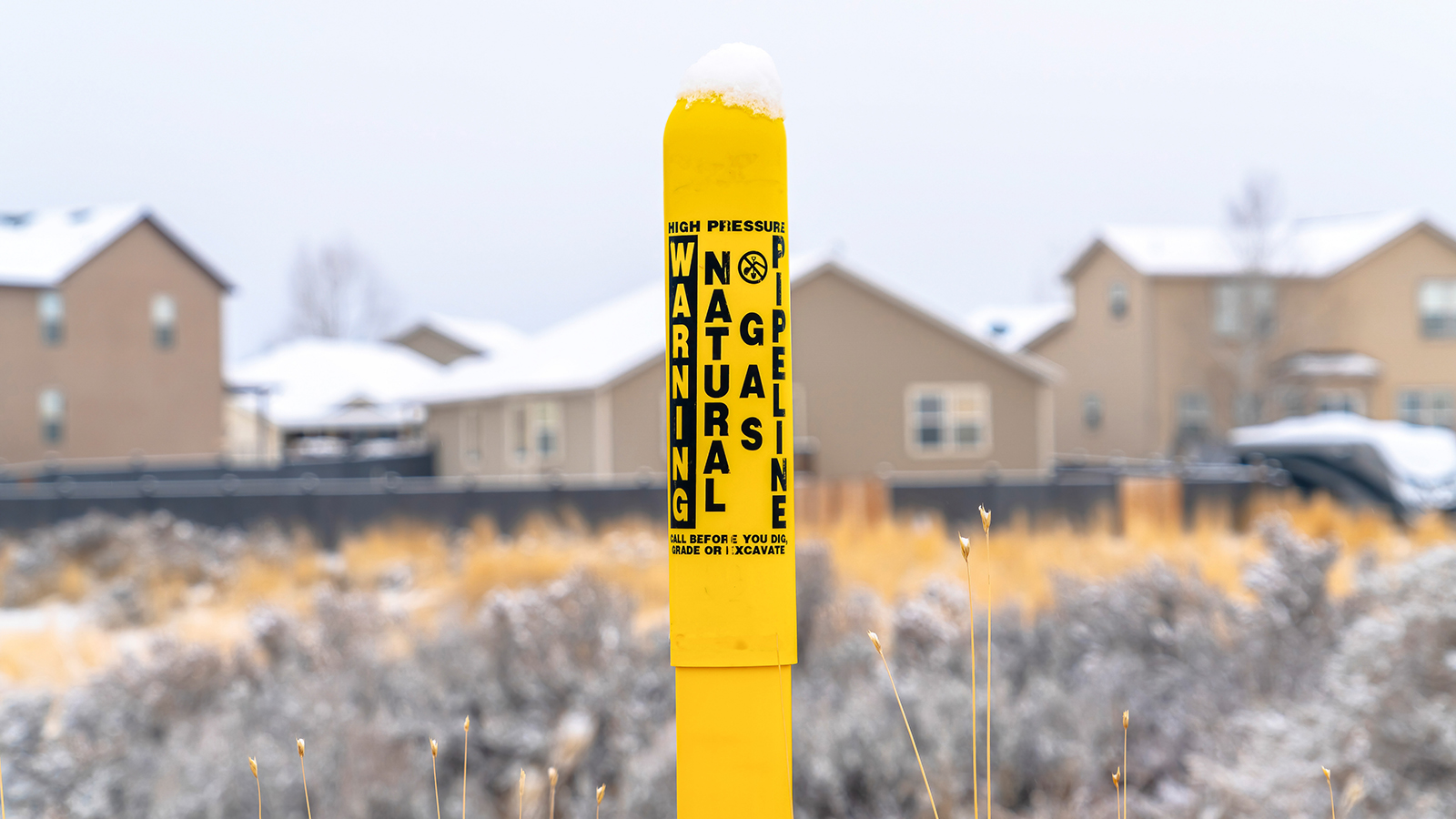
Methane Gas Leaks

